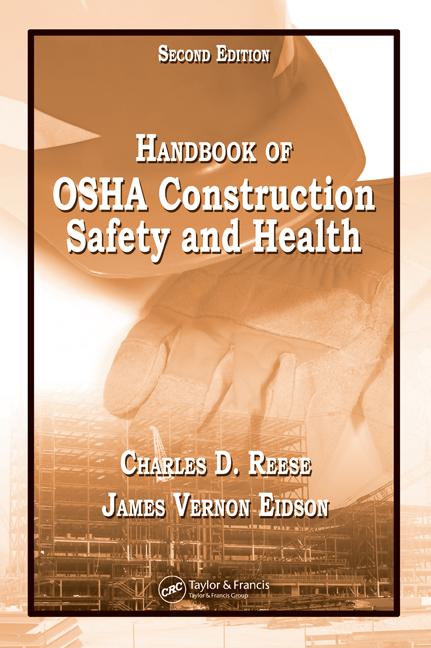
|
An exclusive ISHN Q&A with retired Cal/OSHA official Garrett Brown
Submitted to ISHN August 4, 2014, in response to questions sent to Garrett
1. You say Cal/OSHA is heading in "new direction" due to the political preferences of Cal/OSHA's overseers. Describe the components of this "new direction." Why do you oppose it?
Actually the term “new direction” was used by then-Labor Secretary Marty Morgenstern and Department of Industrial Relations Christine Baker in explaining why they were dismissing then Cal/OSHA Chief Ellen Widess via a forced resignation in September 2013. In many meetings I attended with DIR Director Baker before and after the September dismissal, Baker has repeatedly promoted the idea that Cal/OSHA needs a “new paradigm.”
This new paradigm is really just the standard Republican approach to regulatory enforcement. It is the notion that the vast majority of employers either do the right thing, or would do the right thing if they knew how. So Cal/OSHA’s priority should be compliance assistance, partnerships and consultation for these responsible employers.
For the small layer of “low road” or “bad actor” employers, regulatory enforcement is required to eliminate “unfair competition” and establish a “level playing field” for “high road” employers. But with these responsible employers making a good-faith effort and who make an honest mistake, Cal/OSHA should not be bothering them with “gotta-cha” citations and fines, according to the new paradigm.
So DIR’s Labor Enforcement Task Force (LETF) will conduct enforcement actions against the “underground economy” employers, but large, politically-connected “responsible” employers will get kid-glove treatment. This is the new direction that Cal/OSHA is now undertaking under the absolute and uncontested control of Director Baker.
Underlying this ideology is the contention that workplace health and safety, especially with major employers, is no longer a problem. This is simply not the case.
In the last year for which there is official, confirmed data – calendar year 2012 – 375 California workers were killed on the job and never came home. This is a worker dying every day of the year at work, and thousands more are killed annually by occupational diseases they got on the job.
That year California had 40,220 cases of lost work days (median days lost = 21 days), and more than 14,000 hospitalizations. Workers’ compensation insurance data indicate that there were 646 amputations, with only 470 these reported by the employers.
Pull the files for any year of the employers who received “Willful” citations for fatalities or serious, disabling injuries, and the list of employers includes many large, Fortune 500 corporations found to be deliberately out of compliance, as well as the famous “low road” or small employers.
The current workplace death and injury rates in California are unacceptable. But DIR’s new corporate-friendly approach is completely at variance with effective worker protection as I witnessed it in my 18 years experience as a field compliance officer before going to work in Cal/OSHA Headquarters as the Special Assistant to Chief Widess.
My experience as a field compliance officer is that about 15% of employers are genuinely “high road” and meet most OSHA standards without much oversight. About 10% of employers are basically criminals. The other 75% of employers are in the middle, and they move toward the criminal end, or towards the compliant employers, all depending on the posture and activities of the regulatory agency.
To make strong, across-the-board enforcement Cal/OSHA’s second or third priority – as in the current “new direction” – means more and more employers in the middle drift toward the criminal end of the spectrum as there few or no consequences to non-compliance in the “partnership” or “consultation” model. If caught, employers drifting to the criminal end can always claim they were ignorant or “confused” about the regulations, many of which have been in place for decades.
2. California Gov. Jerry Brown is a Democrat. Why is a democratic administration pursuing what you call a "pro corporate" shift in safety and health regulatory policy? Isn't this usually the province of GOP administrators of regulatory programs? Why didn't labor groups and safety and health professional societies come to the defense of a more aggressive/progressive and well-resourced Cal/OSHA?
Jerry Brown is a “small government” Democrat who is committed to austerity. Like other “corporate Democrats” in California and nationally, Brown is heavily funded by corporate enterprises and is careful to protect their interests while recognizing that labor officials and their organizations are useful for campaign contributions and campaign workers. So, after a round or two of strenuous labor lobbying, Brown typically makes modest concessions to needs of working people for “political optics” purposes and to keep labor officials in his campaign corner.
The real power and political agenda is evident in the Chamber of Commerce’s annual list of “job killer” legislation that the Chamber wants to kill either in the legislature or by gubernatorial veto. In the 2013 legislative season, the Chamber was able to kill 37 of its 38 “job killer” bills – the only survivor was a bill Governor Brown signed to raise the state minimum wage in 2016 to a level that will be lower in real terms than the minimum wage was in 1968, 45 years ago. In the 2014 legislative session, 20 of the Chamber’s 27 “job killer” bills have already died and the session is not yet over. All this in a California where Democrats hold a 2/3rds majority in the legislature and where there is a Democratic Governor.
There is not much difference between corporate Democrats and moderate Republicans (a shrinking sector being replaced by the corporate Dems). One difference, however, is that moderate Republicans generally just ignore OSHA altogether in a form of “malign neglect,” while Democrats like Jerry Brown are interventionist and very political.
Brown is a relentless politician who is always in campaign mode, and acquiring, cultivating and protecting major campaign contributors is essential. Director Baker is a political operator and “spin-meister” herself, and always keen to show she is a loyal, team player of the Governor who appointed her.
With this political leadership above Cal/OSHA, deciding the relative merits of protecting corporate interests as against protecting workers’ health and safety is not even close – strong, effective regulatory enforcement to protect workers on the job loses every time.
If it were not for the labor movement, there would have been no creation of Fed OSHA in 1970 and Cal/OSHA in 1973. But the political context is very different in 2014. Less than 7% of workers in the private sector have a union in the United States today, and less than 12% overall have union protection. Even in California where the stats are a little better, the social influence and political power of organized labor is much weaker today than at the time of Cal/OSHA’s birth.
In a state where Democrats are the only game in town, labor’s lobbyists have adopted political expediency as their political strategy. Maintaining good relations with elected officials (whoever they are) and these politicians’ appointees are the priority and trump all other considerations. Since labor “cannot get everything it wants,” priorities have to be made and some issues are relegated to the bottom of the list. Health & safety has not been a labor priority for decades, and so there are many issues simply “more important” than health and safety (such as legislation, appointments, nominal policy directives).
None of the labor officials or lobbyists are going make a fuss about Cal/OSHA with Governor Brown or Director Baker when good relations and personal access for “more important things” are the linchpin of their political strategy.
The OHS profession has always been committed to protecting workers, but it does not have the social weight and political power to effectively defend Cal/OSHA. Recently the orientation and priorities of the associations’ executive leaderships has been influenced by the fact they are virtually all corporate OHS managers loyal to their employers and ever anxious to “talk the language of business.”
The sad fact of the matter is that starved, understaffed and limping-along Cal/OSHA has virtually no friends who will fight for it.
3. Describe some of what you call Cal/OSHA's "groundbreaking" regulations. What do you expect to see happen with the enforcement of these regs under the agency's "new direction"?
California has long been known for OHS regulations that go beyond the minimum Federal requirements. The state has had an “Injury and Illness Prevention Program” requirement since 1991. The nation’s first ergonomics/repetitive motion standard was enacted here in the 1990s. More recently California has enacted a heat illness prevention program for outdoor workers, an Aerosol Transmissible Diseases standard, a standard to protect workers from respiratory disease due to exposure to food flavorings containing diacetyl (butter flavoring), and regularly updates permissible exposure limits for airborne chemicals.
A new regulation was recently adopted to ensure safe handling of patients and there is a new rulemaking project to reduce workplace violence to health care workers. With the support of labor, community and environmental groups, Cal/OSHA has maintained important worker protections in the existing California hazard communication standard, despite Federal OSHA’s decision to drop the longstanding “one-study rule” and the use of multiple agency “floor lists” of adverse toxic effects of chemicals as part of the federal “Globally Harmonized System” (GHS) revisions. Cal/OSHA also has stronger regulations for cranes and tunneling than Fed OSHA.
But stronger regulations do not mean much if Cal/OSHA does not have the staffing and resources necessary to actually enforce these regulations.
In December 2013, when I retired from Cal/OSHA, we had 170 compliance safety and health officers for a workforce of 18.6 million – a ratio of 1 inspector for every 109,000 workers. Fed OSHA’s inspector to worker ratio is 1 : 66,000, while the state of Washington has a 1 : 33,000 ratio and Oregon has a 1 : 28,000 ratio. Surely the workers of California deserve the same level of protection as workers in other states.
Recently Cal/OSHA has hired more CSHOs – 12 for the Process Safety Management unit at oil refineries and chemical plants under orders from the Legislature; and another 12 or 13 for the 21 field compliance offices around the state. This means half of the District Offices will be able to hire one additional compliance field inspector, while the other half of the field offices will get none.
California simply does not have the boots on the ground to effectively enforce worker protection regulations. The strategy of Director Baker is to “do more with less.” At present the state of California has more Fish & Game Wardens (253) than workplace health and safety compliance officers (under 200).
In August, the Cal/OSHA Medical Unit will be half the size it was under Chief Widess – just one physician and one nurse – at a time when the Unit’s work has expanded with the requirements of standards like the heat illness prevention, bloodborne pathogens and aerosol transmissible diseases standards. DIR’s current plan is not to fill the vacant physician position and may add one or two nurses to a unit that had seven MDs and three RNs in the 1970s.
In addition to lack of needed resources, the DIR’s new direction has involved intensive micro-managing of compliance inspections by the DIR Director and her staff. This “control freak from above” approach also opens the door for direct DIR intervention into open inspections of specific employers, including the corporate campaign contributors and other politically-connected employers identified by name in the DIR procedures.
The business-friendly, austerity-forever ideology, combined with politically-motivated practices, of the Governor and DIR Director weaken the impact of health protective regulations in California.
4. You say Cal/OSHA is the largest OSHA state plan and is usually considered the premier state plan. What will, as you describe as under-staffing, under-resourcing, and the pro-corporate shift, do to the agency's legacy?
The legacy of Cal/OSHA as a “stronger than Fed OSHA” agency is definitely at risk under the present Administration. Political spin by DIR and the practice of saying one thing (“strong enforcement is our priority”) while doing exactly the opposite undermines the credibility and reputation of Cal/OSHA both in California and nationally.
During the years of Chief Widess’ tenure, Cal/OSHA made a concerted effort to respond to the hazards confronting low wage, often immigrant workers in the warehouse industry east of Los Angeles, in waste recycling centers in Oakland and Los Angeles, car washers in LA, and farm workers in the Central Valley and other agricultural areas. We worked closely with local workers centers and labor union organizers to address hazards to the most vulnerable workers in the state with thorough investigations by local compliance offices.
This legacy may be lost with DIR’s new direction. Director Baker meets frequently with labor officials and lobbyists, and is quite adept at calculating the inducements required to maintain their support – money for research projects, appointments of officials to government committees, speeches at union gatherings, and the like.
But what will happen when the needs of farm workers conflict with the interests of politically powerful growers? Or when the efforts of health care workers to reduce assaults and violence in the state psychiatric hospitals conflicts with the political spin of the Governor’s appointees running the hospitals?
5. Do you see a domino effect at play here, with administrations of other OSHA state plans seeing what is happening in California and also deciding to cut costs and save money on staffing, resources and enforcement?
The problems that Cal/OSHA faces – lack of resources, staffing and political will – are national problems that affect many other state plans as well. There are state plans with even fewer resources and even more business-friendly attitudes. Those states will hardly be motivated by California’s example to raise their own bar, while states like Washington and Oregon will come under even more pressure to follow Cal/OSHA’s downward trajectory.
If a Democratic administration in California can get away with putting Cal/OSHA on a starvation diet and closely-monitoring it to ensure implementation of business-friendly practices – and the labor movement and OHS professionals stand by with arms crossed as passive spectators – then effective worker protection in California and elsewhere is under serious threat.
However, we have not yet reached the point of no return, and the people and organizations that motivated Republican Richard Nixon to sign the OSHA Act in 1970 could “motivate” Democrat Jerry Brown and his appointees to change course and revitalize Cal/OSHA as an agency whose first priority is effective enforcement and protection of the lives, health and safety of California workers. This, however, would require a change of course and attitude on the part of labor and OHS organizations.
6. Finally, do you see any parallels between Cal/OSHA's "new directions" and regulatory philosophy and the activities of Federal OSHA in Washington DC under the Obama administration?
As many people have discovered to their disappointment, President Obama is a corporate Democrat very similar to Governor Brown in his political philosophy and priorities. The political context in Washington, DC, for effective regulatory enforcement to protect workers is even bleaker. Congressional Republican animosity toward any form of worker protection has made rule-making an impossibility and every year brings new restrictions, obstacles and hurdles to OSHA’s basic functioning. Once again health and safety is simply not a priority for the capitol’s labor officials or for Democratic politicians from the White House to Capitol Hill.
The Fed OSHA leadership team led by Dr. David Michaels and Jordan Barab, on the other hand, are genuinely committed to effective worker protection and have done creative things to push the envelope as far as Washington, in all its forms, will allow.
I would say that Dr. Michaels’ OSHA and the Cal/OSHA Headquarters team of Chief Widess’ tenure were headed in the same direction with the same goals. The September 2013 coup that forced Widess’ resignation was designed precisely to change Cal/OSHA’s direction, as Labor Secretary Morgenstern and Director Baker explained at the time.
This business-friendly approach fits in neatly with Governor Brown’s ideology and appointees, and there is no California labor official or OHS professional association willing to challenge this at present.

